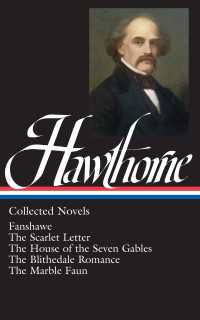- ホーム
- > 洋書
- > 英文書
- > Architecture
Full Description
Between the Civil War and the Great Depression, the Young Men's Christian Association built more than a thousand community centers across the United States and in major cities around the world. Dubbed "manhood factories" by Teddy Roosevelt, these iconic buildings served as athletic centers and residential facilities for a rapidly growing urban male population.
In Manhood Factories, Paula Lupkin goes behind the reserved Beaux-Arts facades of typical YMCA buildings constructed in this period to understand the urban anxieties, moral agendas, and conceptions of masculinity that guided their design, construction, and use. She shows that YMCA patrons like J. P. Morgan, Cyrus McCormick Jr., and John Wanamaker hoped to create "Christian clubhouses" that would counteract the corrupting influences of the city. At first designed by leading American architects, including James Renwick Jr. and William Le Baron Jenney, and then standardized by the YMCA's own building bureau, YMCAs combined elements of men's clubs, department stores, hotels, and Sunday schools. Every aspect of the building process was informed by this mission, Lupkin argues, from raising funds, selecting the site and the architect, determining the exterior style, arranging and furnishing interior spaces, and representing the buildings in postcards and other printed materials.
Beginning with the early history of the YMCA and the construction of New York City's landmark Twenty-third Street YMCA of 1869, Lupkin follows the efforts of YMCA leaders to shape a modern yet moral public culture and even define class, race, ethnicity, and gender through its buildings. Illustrated with many rarely seen photographs, maps, and drawings, Manhood Factories offers a fascinating new perspective on a venerable institution and its place in America's cultural and architectural history.
Contents
Acknowledgments
Introduction: The YMCA and the Cultural Landscape of Modernity
1. Reconciling Morality and Mammon: A Christian Club for Clerks
2. Inventing the YMCA Building
3. Accepting the Call to Build: Architectural Evangelism on Main Street
4. Bedrooms, Billiards, and Basketball: Retooling the YMCA
5. From Greensboro to China: YMCA Architecture as International Business
Epilogue: Influences Radiate . . .
Notes
Bibliography
Index
-

- 電子書籍
- ソードアート・オンライン【ノベル分冊版…
-

- 電子書籍
- HOW TO THINK LIKE B…
-

- 電子書籍
- 週刊ビッグコミックスピリッツ 2020…
-

- 洋書電子書籍
- Nathaniel Hawthorne…




